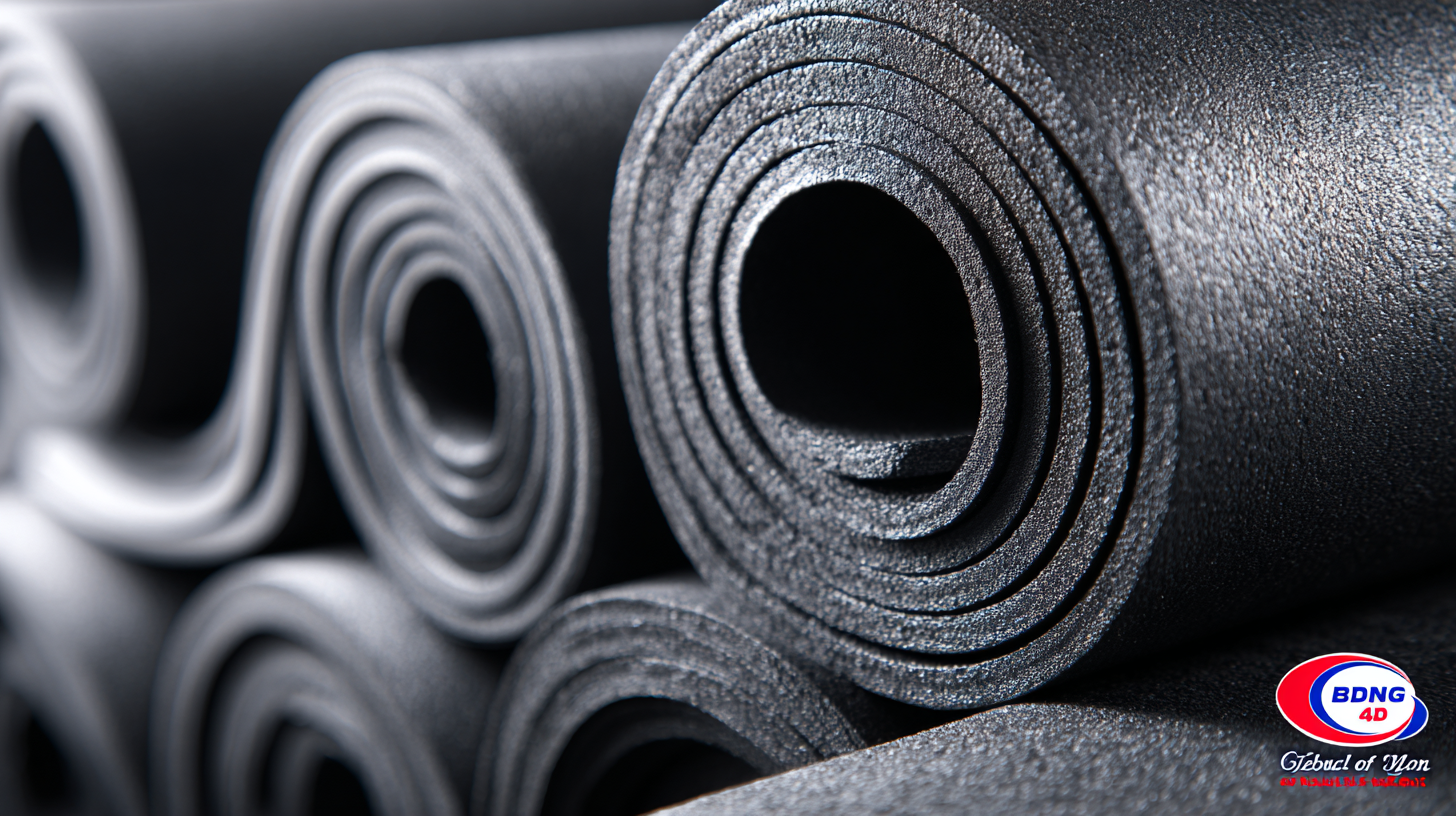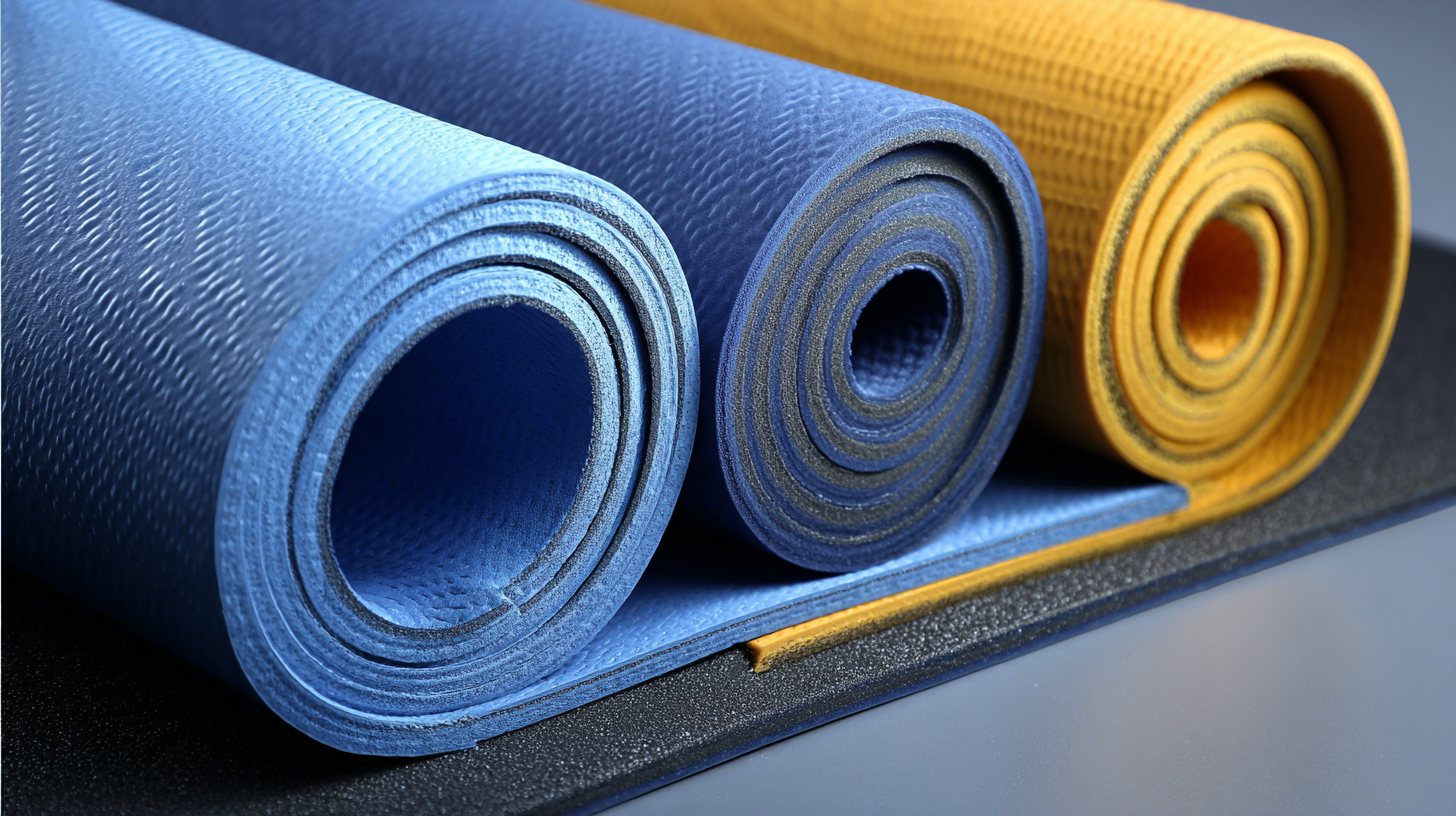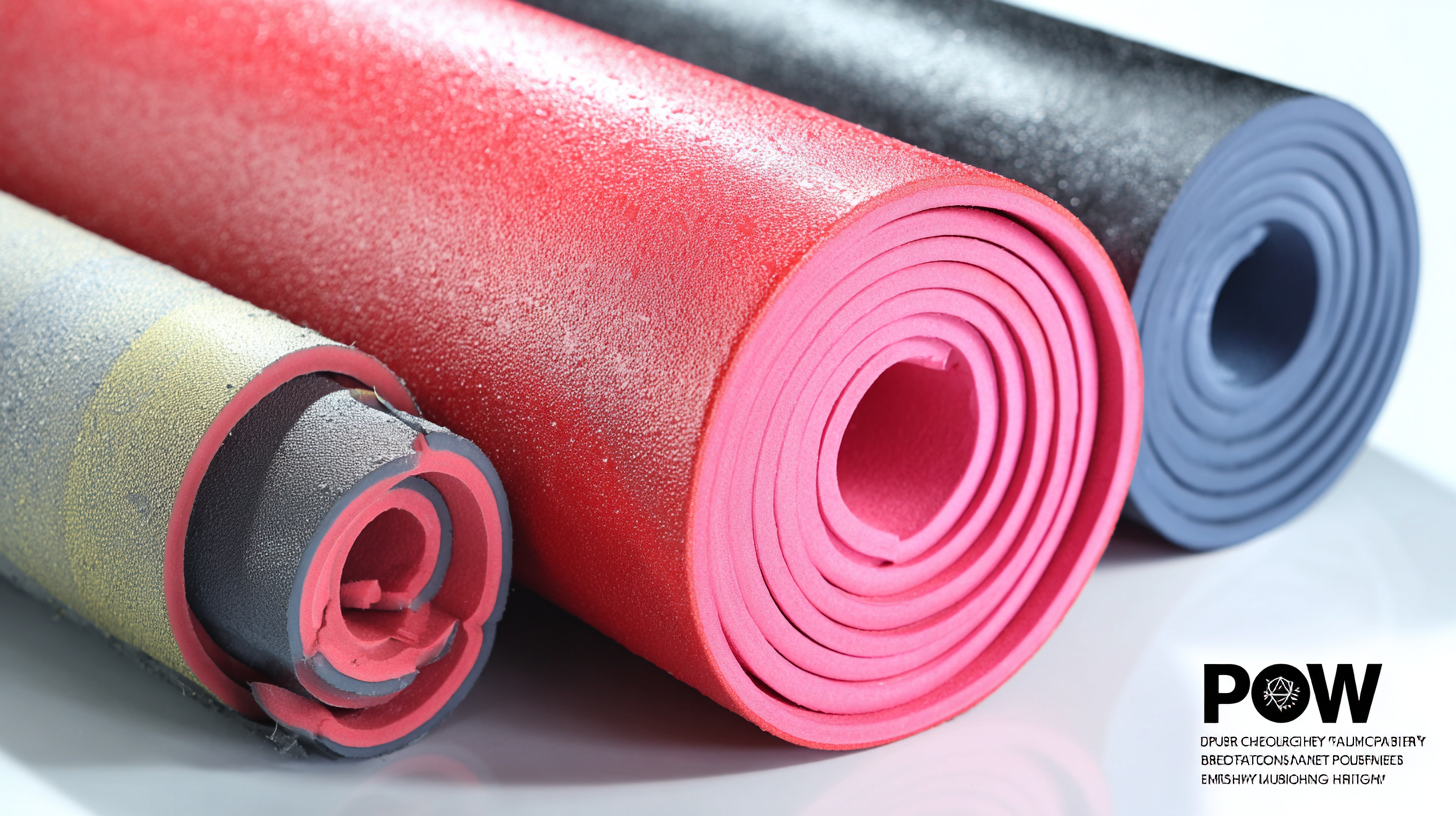In recent years, the demand for high-quality Rubber Exercise Mats has surged, driven by the growing emphasis on fitness and wellness across the globe. According to a report by Research and Markets, the global fitness equipment market is projected to reach $15 billion by 2026, with exercise mats being a significant contributor to this growth. As consumers become more health-conscious, the quality and durability of exercise gear have become critical factors in purchasing decisions.

China has emerged as a leader in innovative manufacturing, offering a wide range of Rubber Exercise Mats that meet both international standards and consumer expectations. With advancements in technology and material science, Chinese manufacturers are not only producing mats that provide superior shock absorption and stability, but they also cater to various needs, from yoga enthusiasts to professional athletes.
This blog will explore the top quality Rubber Exercise Mats available from China, comparing their features, advantages, and overall value to global buyers.
China's rubber exercise mat industry is experiencing remarkable growth as it positions itself as a significant player in the global market. With projections indicating that the Yoga and Exercise Mats Market is set to reach USD 10,430 million by 2025, China's innovative manufacturers are stepping up to leverage this burgeoning demand. The rise in international consumer interest in health and wellness is a pivotal factor driving this trend, leading to an increased need for high-quality exercise mats that combine functionality with eco-friendly materials.
The recent expansion of the global industrial floor mat market, forecasted to grow at a 4.5% CAGR and attain a valuation of US$ 7.1 billion, underscores the versatility and high demand for rubber exercise mats across various applications. As global consumers seek durable and sustainable products, China's rubber exercise mat manufacturers are not only meeting but exceeding expectations through innovation and improved production techniques. This upward trajectory is further bolstered by a flourishing global yoga mat market, projected to reach approximately USD 13.2 billion by 2030, highlighting the significance of China's role in shaping the future of fitness accessories.
| Dimension | Material Type | Thickness (mm) | Surface Texture | Color Options | Recommended Use |
|---|---|---|---|---|---|
| 183cm x 61cm | Natural Rubber | 5 | Textured | Black, Blue, Green | Yoga, Pilates |
| 183cm x 76cm | PVC | 8 | Smooth | Red, Gray | Weight Training |
| 160cm x 80cm | EVA Foam | 10 | Anti-slip | Purple, Pink | Home Gym |
| 200cm x 100cm | NBR | 15 | Foam Texture | Black | Cardio, Aerobic |
| 180cm x 90cm | TPR | 6 | Dual Surface | Blue, Black | Fitness Classes |
In the ever-evolving landscape of fitness equipment, China's innovative manufacturing techniques have significantly enhanced the quality and efficiency of rubber exercise mats. According to a report by The Freedonia Group, the demand for fitness mats is projected to reach $1.5 billion by 2025, propelled by rising health consciousness and a growing preference for home workouts. The integration of advanced technologies, such as automation and precision molding, has enabled manufacturers to produce mats that not only meet but exceed international safety and quality standards.
One notable trend in the industry is the use of eco-friendly materials, alongside advancements in production processes that minimize waste. A study by Grand View Research highlights that the global eco-friendly mat market is expected to grow at a compound annual growth rate (CAGR) of 8.5% between 2020 and 2027. By adopting sustainable practices, Chinese manufacturers are not only appealing to environmentally conscious consumers but also positioning themselves as leaders in the global market. The combination of innovative manufacturing techniques and a commitment to sustainability places China at the forefront of the rubber exercise mat industry, ensuring that global buyers have access to top-quality products that enhance their fitness experience.
The global demand for rubber exercise mats has seen significant growth, driven by various factors that highlight their importance in fitness and wellness. According to a recent report by Grand View Research, the global fitness equipment market is projected to reach USD 14.6 billion by 2028, with rubber exercise mats being a crucial component due to their durability and safety features. As more consumers prioritize health and fitness, the need for high-quality, reliable workout gear, particularly in home gym setups, has surged.
Another key factor influencing the demand for these mats is the increasing awareness of sustainable materials. With eco-friendly consumer trends on the rise, manufacturers in China are stepping up their game by producing mats from recycled rubber, which appeal to environmentally conscious buyers. A study published by the National Institute of Health indicates that sustainable products account for 38% of consumer purchases in various categories. This shift not only enhances the appeal of rubber exercise mats but also positions Chinese manufacturers at the forefront of innovation in the fitness equipment industry, catering to a market that values both performance and sustainability.

The fitness equipment market has seen significant growth, driven by increasing health consciousness and a shift towards home-based workouts. According to industry analysis, the global market for fitness equipment is projected to reach approximately $15.3 billion by 2028, with a compound annual growth rate (CAGR) of around 4.5% from 2021 to 2028. This growth can be attributed to the rising popularity of different types of equipment such as cardio machines, strength training devices, and accessories that cater to diverse fitness needs.
Distributing these products through various channels has become crucial for market penetration. In particular, online retailing has emerged as a dominant force, with e-commerce channels expected to account for over 30% of total sales by 2026. Additionally, the residential segment is anticipated to expand significantly, as consumers invest in personal fitness solutions that can easily integrate into their homes.
Moreover, the wearables market complements this trend, with projections indicating that the global smart wearable devices market will grow from $24.90 billion to an astonishing $346.20 billion by 2031, marking a CAGR of 11.61%. This data underscores the intertwined relationship between fitness equipment and smart technology, reflecting consumers' increasing demand for innovative solutions that enhance their exercise experiences.
 The production of rubber exercise mats in China has evolved significantly, driven by the increasing demand for sustainable manufacturing practices. Innovative manufacturers are focusing on eco-friendly approaches that not only cater to the needs of fitness enthusiasts but also contribute positively to the environment. These initiatives often include the use of recycled materials, ensuring that the rubber sourced for mats has a reduced carbon footprint compared to traditional methods. By incorporating post-consumer waste into their products, manufacturers can diminish overall material waste while promoting a circular economy.
The production of rubber exercise mats in China has evolved significantly, driven by the increasing demand for sustainable manufacturing practices. Innovative manufacturers are focusing on eco-friendly approaches that not only cater to the needs of fitness enthusiasts but also contribute positively to the environment. These initiatives often include the use of recycled materials, ensuring that the rubber sourced for mats has a reduced carbon footprint compared to traditional methods. By incorporating post-consumer waste into their products, manufacturers can diminish overall material waste while promoting a circular economy.
Moreover, many companies are adopting greener production technologies that minimize waste and energy consumption throughout the manufacturing process. Techniques such as water-efficient cleaning methods and the use of renewable energy sources are becoming standard practices. This commitment not only helps reduce environmental impact but also appeals to eco-conscious consumers who prioritize sustainability in their purchasing decisions. As a result, these innovations are positioning Chinese rubber mat manufacturers as leaders in the global market for high-quality, environmentally friendly fitness products.
